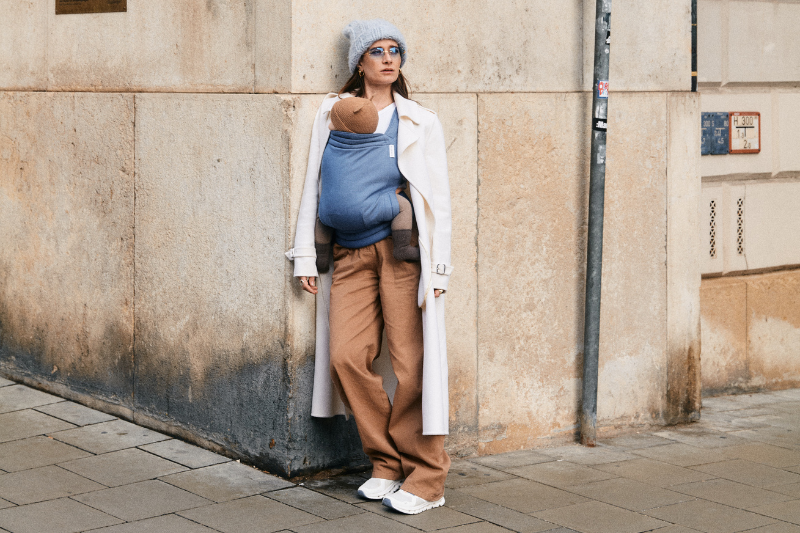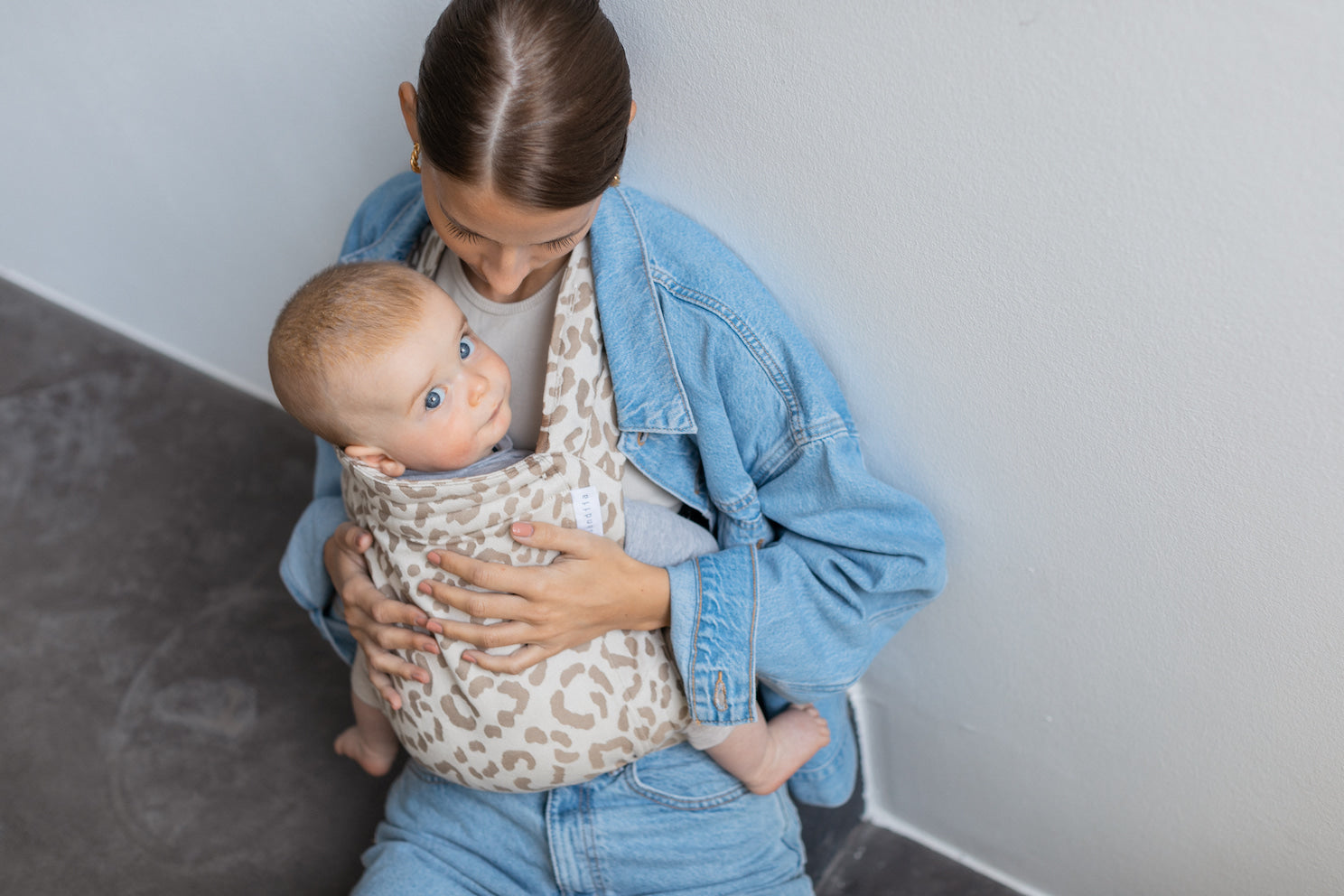
Ergonomically correct carrying – safety and comfort for parents and baby
When a baby arrives, parents want to keep it close – while also protecting its back, hips, and their own health. A well-chosen baby carrier can make everyday life much easier, provided it supports the correct posture. But what does "ergonomically correct carrying" actually mean?
Why ergonomics are so important when wearing a carrier
Babies are born with a rounded spine. The double-S curve only develops over the first few months. A good baby carrier respects this natural posture and allows for a frog-leg position : the legs are slightly spread, the knees are higher than the bottom, and the back remains gently rounded. This promotes healthy hip development and prevents pressure points.
Ergonomics are also crucial for parents. Wide, well-padded shoulder straps and a stable hip belt distribute the weight evenly. This makes it possible to manage longer walks or shopping trips without back pain.
The correct wearing position
In the beginning, most babies feel most comfortable when carried in front of the baby . This allows them to feel the heartbeat and warmth. From around six months, or when the child can sit more steadily, carrying them on your back can be more comfortable – especially for longer distances. Carrying them facing forward, however, is controversial, as it often doesn't support their natural posture.
Finding the right carrier
There are various baby carriers: wraps, Mei Tais, half-buckle carriers, and full-buckle carriers. A wrap is extremely flexible but requires practice. Ready-made carriers are quick to put on and often the more practical choice for when you're out and about. It's important that the carrier adjusts to you and your baby – not the other way around.
Safety when wearing
Pay attention to the following points:
-
Your baby's head and face must always remain uncovered.
-
The airways must never be obstructed.
-
The fabric should be tied tightly enough so that the baby does not "sag".
Conclusion
A good baby carrier combines comfort, safety, and closeness. Paying attention to ergonomic details means investing not only in healthy development but also in relaxed parental shoulders.


